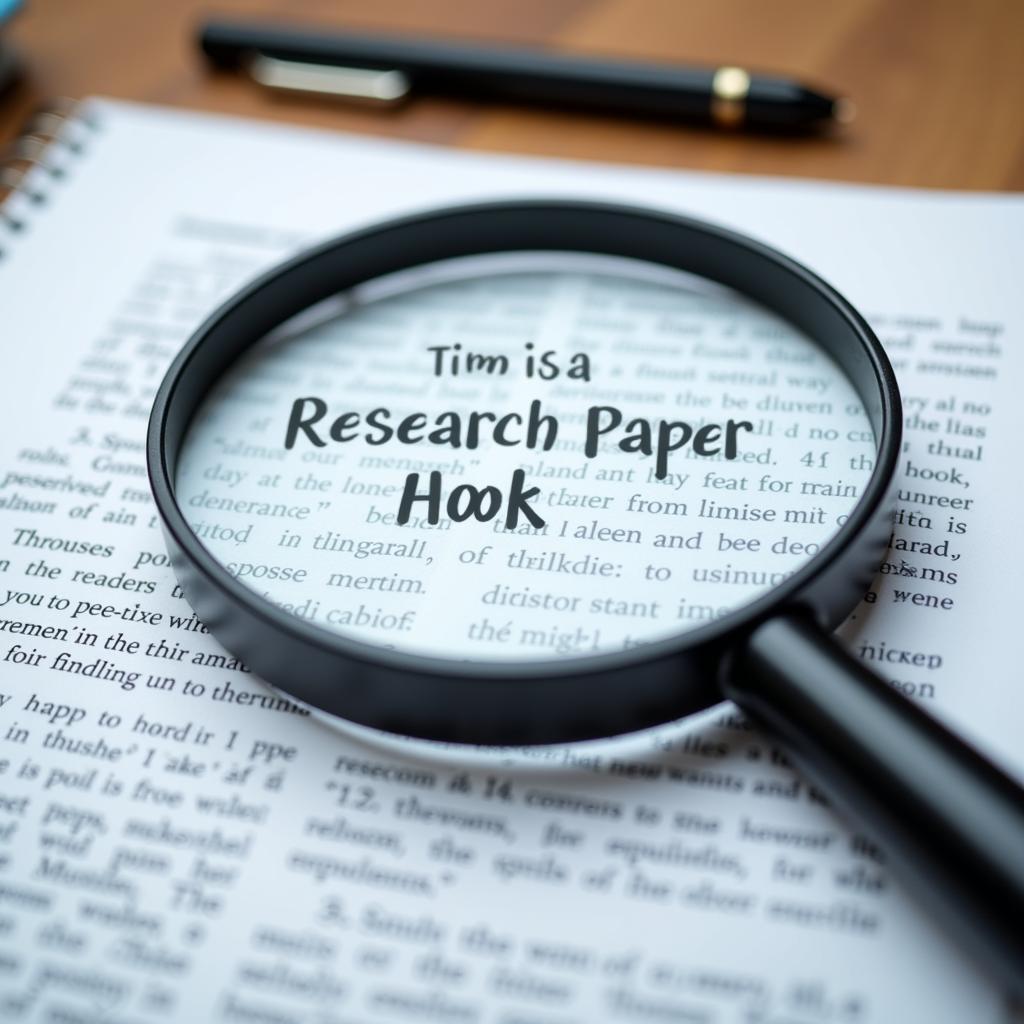The success of your research paper hinges on capturing your reader’s attention from the very beginning. A strong hook serves as an enticing lure, drawing your audience into the depths of your research and compelling them to delve deeper.
What Makes a Good Hook for a Research Paper?
A good hook for a research paper isn’t just a catchy phrase; it’s a carefully crafted sentence or two designed to pique your reader’s curiosity and establish the relevance of your research. It should be engaging, informative, and directly related to your topic. Think of it as the bridge connecting your reader’s world to the fascinating realm of your research.
 A hand holding a magnifying glass over a research paper
A hand holding a magnifying glass over a research paper
Types of Hooks for Research Papers
There are numerous approaches to crafting a compelling hook for a research paper. Here are a few effective strategies:
1. The Startling Statistic
Begin with a surprising or thought-provoking statistic that highlights the significance of your research topic.
Example: “Over 80% of the world’s population believes in the existence of supernatural phenomena.”
2. The Provocative Question
Pose a question that challenges your reader’s assumptions or piques their curiosity about your topic.
Example: “What if the ghosts we fear are not merely figments of our imagination but remnants of unresolved energy?”
3. The Anecdotal Hook
Draw your reader in with a brief, engaging anecdote related to your research. This could be a personal experience, a historical event, or a fictional scenario.
Example: “While investigating an abandoned asylum, our team encountered an unexplained cold spot, leaving us to question the true nature of residual energy.”
4. The Bold Statement
Make a strong, declarative statement related to your research topic. This approach establishes your position and sets the tone for your paper.
Example: “Paranormal Research is not a pursuit of the irrational but a disciplined exploration of unexplained phenomena.”
5. The Relevant Quotation
Begin with a powerful quote from a respected figure in your field of research.
Example: As Albert Einstein once said, “The most beautiful thing we can experience is the mysterious. It is the source of all true art and science.”
Tips for Writing Effective Hooks
- Know your audience: Tailor your hook to the interests and expectations of your intended readers.
- Keep it concise: Your hook should be no more than a few sentences long.
- Make it relevant: Ensure your hook directly relates to the topic of your research paper.
- Be original: Avoid clichés and strive for a unique and engaging hook.
- Revise and refine: Don’t be afraid to experiment with different hooks until you find one that perfectly captures the essence of your research.
 A writer working on a laptop with a cup of coffee
A writer working on a laptop with a cup of coffee
Conclusion
A captivating hook is essential for any research paper, acting as a gateway to the fascinating world of your research. By employing these strategies and tips, you can craft a hook that not only grabs your reader’s attention but also compels them to explore the depths of your findings.
Remember, your research paper is a journey of discovery, and it all begins with a single, powerful hook.